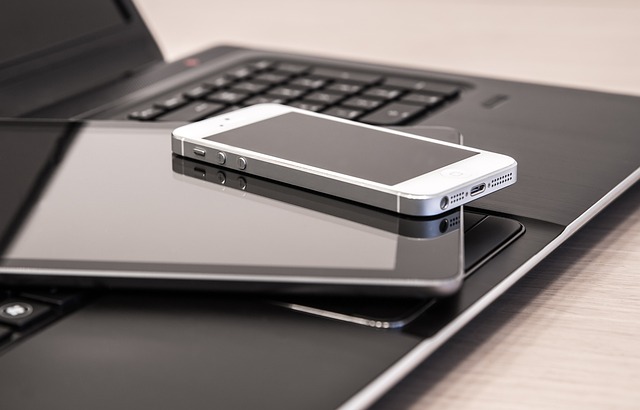Your laptop's battery performance will naturally decline over time, necessitating a replacement laptop battery to maintain peak functionality and prevent unexpected power losses. Key indicators of a degrading battery include a significant drop in battery life between charges, consistently requiring being plugged in, unstable charging levels, and a battery health percentage frequently below 80%. Additionally, abnormal charging patterns, such as excessively long charging times or rapid loss of charge, are clear signs of battery deterioration. A visibly swollen battery poses both operational and safety risks due to overcharging or chemical degradation and should be addressed with a new battery immediately. If your laptop is experiencing significant battery drain while idle, frequent recharging, unexpected shutdowns, or rapid charge loss, these may indicate it's time for a replacement. Similarly, persistent overheating in the battery area, especially if accompanied by poor temperature regulation, is a critical issue that requires a new battery to ensure laptop performance and safety. It's essential to monitor your battery's capacity closely; a substantial decrease in run time or battery health percentage relative to its original state indicates the need for a replacement laptop battery. Regular battery checks and timely replacements are crucial for optimal device operation and longevity.
When your laptop’s performance starts to falter, it’s often a sign that your battery requires attention. Aging batteries can lead to a cascade of issues affecting your device’s functionality and efficiency. This article outlines ten definitive warning signs that indicate it may be time for a replacement laptop battery. From noticeable physical changes like a swollen battery to more subtle behaviors such as frequent shutdowns or inconsistent charging, understanding these signs can help you preemptively address potential problems. By recognizing the early indicators of battery distress, you can take proactive steps to maintain your laptop’s performance and ensure its longevity. Learn to interpret these signals and understand when it’s necessary to invest in a new battery to keep your device running smoothly.
- Recognizing the Red Flags: The Significance of Monitoring Your Laptop Battery Health
- Swollen Battery: A Clear Indicator of Potential Danger and Need for Replacement
- Unusual Battery Drain While Idle: Understanding the Implications for Battery Longevity
- Inconsistent Charging Patterns: When Your Laptop Battery Stops Playing by the Rules
- Frequent Shutdowns or Restarts Due to Power Issues
- The 'Plugged in, But Not Charging' Phenomenon: A Symptom of Battery Degradation
- Laptop Overheating Around the Battery Area: A Sign of Battery Stress
- Diminished Battery Capacity: How to Tell If Your Replacement Laptop Battery Is Already Underperforming
Recognizing the Red Flags: The Significance of Monitoring Your Laptop Battery Health

When your laptop’s battery performance starts to wane, it’s a clear indication that a replacement laptop battery might be on the horizon. Keeping an eye on your battery’s health is crucial for maintaining optimal device functionality and preventing unexpected shutdowns or power loss at inopportune moments. Diminished charge capacity, where your laptop doesn’t hold a charge as long as it used to, is one of the most noticeable signs. This can manifest as a significantly reduced battery life between charges, or your laptop might not power on until plugged in. Another red flag is an uneven battery level display, with the charge percentage rapidly draining and then seemingly stabilizing without any significant usage. Additionally, if your laptop exhibits a battery health percentage that’s consistently below 80%, it’s a strong signal that the battery’s lifespan is shortening. It’s also worth noting changes in charging patterns, such as taking an unusually long time to charge or failing to hold a charge after being fully charged. These are all symptoms that suggest a replacement laptop battery will be necessary soon. Regularly monitoring your laptop’s battery health can help you anticipate when it’s time for a new battery and avoid the frustration of a dead battery at critical moments. Thus, proactive maintenance and understanding these warning signs can extend your laptop’s lifespan and ensure it remains a reliable tool for all your computing needs.
Swollen Battery: A Clear Indicator of Potential Danger and Need for Replacement

If you notice your laptop’s battery appears bloated or significantly protrudes from its usual compartment, this is a clear and immediate warning sign that your battery requires urgent attention. A swollen battery is not just an inconvenience; it’s a potential safety hazard. The expansion indicates that the battery cells have expanded due to overcharging, internal short-circuiting, or chemical degradation, which can lead to overheating and even combustion if left unaddressed. This physical distortion is a definitive sign that the battery’s structure has been compromised, making it prone to failure. To prevent damage to your laptop and to ensure your safety, it is imperative to replace the battery as soon as possible. A professional or an authorized service center can safely perform this replacement, ensuring that your device operates optimally with a new, reliable battery. Regularly monitoring your battery’s health and replacing it when necessary will help maintain the longevity and performance of your laptop.
Unusual Battery Drain While Idle: Understanding the Implications for Battery Longevity

If you’ve noticed your laptop exhibiting an unusual rate of battery drain even when idle, this could be a telling sign that your laptop battery may soon require replacement. While some battery drain during inactivity is normal as batteries naturally lose charge over time, excessive or unexpected loss points to underlying issues that affect the battery’s capacity and longevity. This phenomenon often indicates that the battery is struggling to maintain a charge, which can be due to aging cells or a faulty battery management system. Over time, the battery’s ability to hold a charge diminishes, leading to a shorter operational time between charges and potentially causing the laptop to shut down unexpectedly. Regular monitoring of battery levels during idle periods, coupled with an understanding of the device’s typical behavior, can help identify these warning signs early on. Prompt replacement of a laptop battery in such cases not only ensures the safe operation of your device but also extends its overall usability and performance, making it a critical maintenance task for users.
Inconsistent Charging Patterns: When Your Laptop Battery Stops Playing by the Rules

When your laptop battery deviates from its standard charging patterns, it may be a clear indication that a replacement laptop battery is imminent. Typically, laptops are designed to charge efficiently and maintain power levels within a predictable range. However, as batteries age, they may exhibit inconsistent behavior, such as taking significantly longer to charge or not holding a charge as previously expected. This can result in frequent recharging, leaving you tethered to an outlet, or experiencing unexpected shutdowns when the battery drains quickly. It’s crucial to monitor these changes, as they can be symptomatic of battery degradation. A battery that no longer adheres to its usual charging cycles or retains charge for its advertised duration is a prime candidate for battery replacement. Addressing this issue promptly not only ensures optimal laptop performance but also prolongs the lifespan of your device and protects sensitive components from potential damage due to power fluctuations.
Frequent Shutdowns or Restarts Due to Power Issues

When your laptop frequently shuts down or restarts unexpectedly, it may be a clear indication that your battery’s health has degraded to a point where it can no longer reliably power your device. This issue is often a precursor to complete battery failure and is not just an inconvenience but a sign that investing in a replacement laptop battery is imminent. The lithium-ion batteries commonly used in laptops have a finite lifespan, and over time, their ability to hold a charge diminishes. If your laptop’s battery is struggling to maintain power during normal use, it’s likely that the capacity of the cells has dropped below an acceptable threshold. This can be attributed to various factors such as the number of charge cycles, exposure to extreme temperatures, and even manufacturing defects. Addressing this problem promptly not only ensures the longevity of your laptop but also safeguards your data from potential loss due to sudden shutdowns. Replacing the battery with a new one can restore the performance and reliability of your device, making it a smart investment for both functionality and convenience.
The 'Plugged in, But Not Charging' Phenomenon: A Symptom of Battery Degradation

If your laptop displays the visual cue that it’s charging while it’s plugged in, yet the battery percentage remains static or fails to increment, this could be an early warning sign of impending battery degradation. This phenomenon, where the battery appears charged but is not actually absorbing power, is often indicative of a deeper issue within the battery cells. Over time, lithium-ion batteries naturally lose their ability to hold a charge as effectively due to chemical changes and wear. When you encounter this situation consistently, it’s a strong signal that your laptop battery may soon require replacement. It’s advisable to monitor this closely, as this particular symptom can precede a sudden loss of battery capacity or an inability to hold any charge at all. Regularly checking the battery health through your operating system’s diagnostic tools can help you gauge when it’s time to invest in a replacement laptop battery to avoid unexpected power outages and data loss. Addressing this issue promptly is key to maintaining your laptop’s performance and longevity.
Laptop Overheating Around the Battery Area: A Sign of Battery Stress

If your laptop is exhibiting signs of overheating, particularly in the vicinity of the battery compartment, this could be a telling indication of battery stress. Overheating can be a result of a deteriorating battery that’s no longer capable of maintaining optimal temperatures due to its diminished capacity or degrading cells. As batteries age, they may not dissipate heat as efficiently as before, leading to potential performance issues and, in some cases, safety concerns. This is when considering a replacement laptop battery becomes paramount. It’s crucial to address this issue promptly since overheating can cause further damage to your laptop’s internal components, potentially shortening its lifespan or leading to more serious malfunctions. Regular monitoring of your laptop’s temperature and immediate replacement of the battery upon detecting persistent overheating can prevent such complications and ensure your device continues to operate smoothly. Always opt for a reputable source for your replacement laptop battery to ensure quality, compatibility, and longevity.
Diminished Battery Capacity: How to Tell If Your Replacement Laptop Battery Is Already Underperforming

When your laptop’s battery no longer holds a charge as it once did, it may be time to consider a replacement laptop battery. Diminished battery capacity is often an early indicator of battery health. One of the most apparent signs is if your laptop consistently requires plugging in during tasks that previously ran off battery power alone. This underperformance can manifest as a shorter duration before needing to recharge, even if the usage patterns have remained consistent. Another clue is if the laptop’s power meter drains rapidly, especially after being fully charged, indicating a reduced ability to store energy. To accurately assess your battery’s performance, monitor your laptop’s battery level during routine tasks and take note of any significant deviations from its typical run time. Additionally, most laptops come with built-in battery health diagnostics or management tools. Utilize these features; they often provide a percentage that represents the battery’s remaining capacity compared to when it was new. A significant drop in this percentage, often below 80% of the original capacity, is a clear indicator that a replacement laptop battery would be beneficial. Regularly checking and recording your battery’s performance over time can help you determine if underperformance is a gradual decline or a sudden change, guiding your decision on when to invest in a new battery.
When your laptop’s battery exhibits any of the ten warning signs detailed in this article, it’s a clear indication that a replacement laptop battery is imminent. Regular monitoring of your device’s battery health can prevent unexpected power outages and ensure optimal performance. If you’ve noticed swelling, unusual drain while idle, inconsistent charging patterns, frequent shutdowns or restarts, or the battery not charging when plugged in, it’s time to consider a new battery. Overheating near the battery, reduced capacity, and the ‘plugged in, but not charging’ issue are all red flags signaling degradation and the need for a replacement. Addressing these issues promptly can safeguard your laptop from potential damage and maintain its efficiency. Remember to source a reliable replacement laptop battery to ensure longevity and safety of your device.
